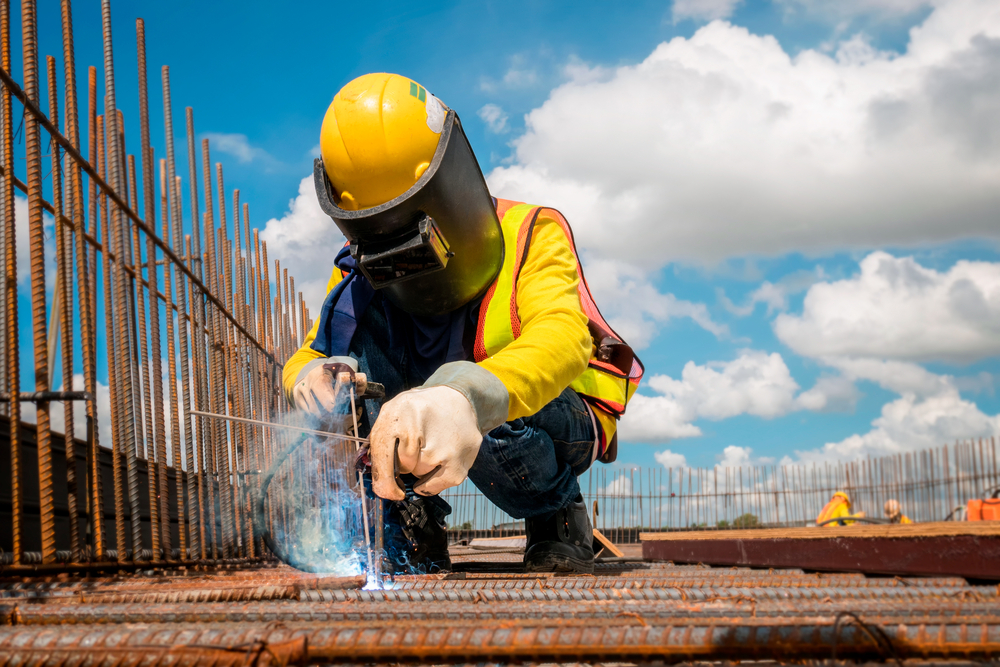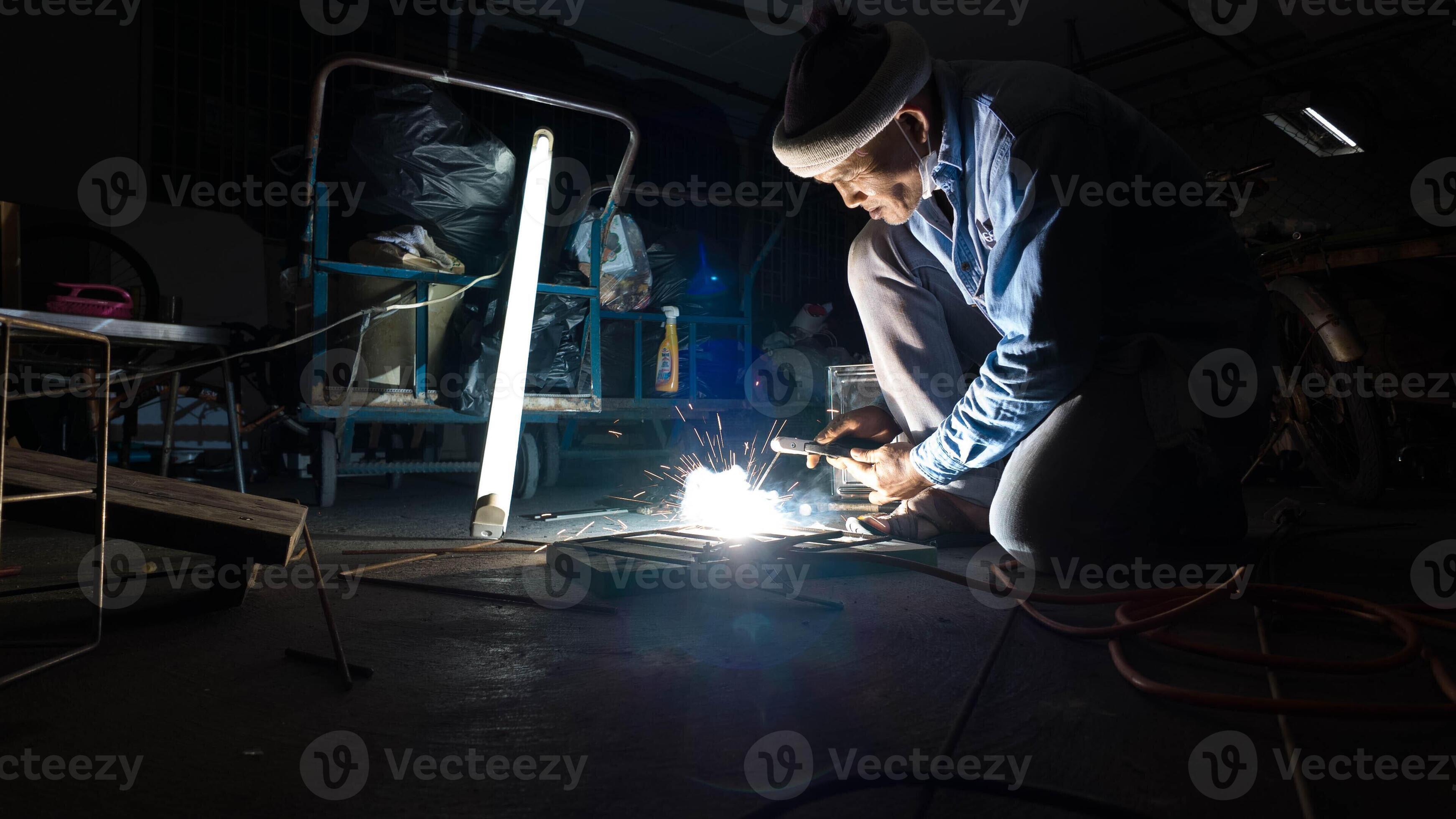Everything about Welding: Trick Insights Into Techniques and Ideal Practices for Success
Welding includes a selection of techniques, each matched for details products and applications. Understanding these techniques, such as GMAW, SMAW, and TIG, is vital for attaining ideal outcomes. The appropriate tools and safety and security methods can not be neglected. As preparation and fixing play important functions in the welding process, understanding these components can greatly enhance the quality of the final product. What are the key aspects that ensure a successful weld?
Understanding Different Welding Techniques
Welding strategies include a selection of techniques, each matched to specific applications and materials. Among one of the most common techniques are Gas Steel Arc Welding (GMAW), Protected Metal Arc Welding (SMAW), and Tungsten Inert Gas Welding (TIG) GMAW, also recognized as MIG welding, is prominent for its rate and versatility, making it ideal for slim materials. SMAW, or stick welding, is preferred for its simpleness and performance in exterior atmospheres, particularly with thicker steels. TIG welding provides accuracy and control, making it ideal for complex job and non-ferrous metals (Montana Mobile Welding and Repair Belgrade). Each method has its distinct benefits and considerations, allowing welders to choose the most effective method based upon the project's needs, material type, and preferred end results. Understanding these methods is essential for effective welding
Essential Welding Tools and Devices
While various welding methods call for details abilities, the right devices and tools are just as necessary for accomplishing high quality outcomes. Crucial welding equipment consists of welding equipments, which differ relying on the method-- such as MIG, TIG, or stick welding. Safety equipment, consisting of gloves, aprons, and headgears, warranties safety and security and convenience throughout the process. Additionally, components and clamps aid safeguard materials in area, ensuring precision in welds. Consumables like welding rods, wire, and shielding gas are also important parts that affect the top quality of the weld. In addition, devices such as mills and cutters assist in surface preparation and post-weld ending up, contributing to a specialist result. Purchasing top notch tools eventually enhances the efficiency and performance of welding tasks.
Safety And Security Practices in Welding
Appropriate security methods are necessary in the welding market to safeguard workers from potential dangers. Welders need to wear appropriate personal safety tools (PPE), consisting of safety helmets with proper shading, handwear covers, and flame-resistant clothing. Adequate air flow is essential to minimize direct exposure to harmful fumes and gases produced throughout the welding process. Furthermore, workers ought to be learnt the appropriate handling of welding devices to avoid mishaps. Fire precaution, such as maintaining flammable materials away from the welding location and having fire extinguishers easily available, are required. Routine examinations of devices and work spaces can help determine potential threats before they bring about mishaps. By adhering to these safety methods, welders can develop a safer working environment and decrease risks connected with their trade.
Readying Products for Welding
Preparing materials for welding is a crucial action that considerably affects the high quality and stability of the end product (Montana Mobile Welding and Repair Welding). Correct prep work involves cleansing the surface areas to get rid of impurities such as rust, oil, and dust, which can compromise the weld. Strategies such as grinding, fining sand, or using solvents are commonly used to accomplish a clean surface. In addition, ensuring that the materials mesh comfortably is important; spaces can result in weak welds. It's additionally crucial to take right into account the placement and positioning of the elements, as this will certainly impact the convenience of welding and the last end result. Lastly, picking the suitable filler product and official website making certain compatibility with the base metals is vital for achieving solid, durable welds
Tips for Achieving High-Quality Welds
Accomplishing high-quality welds requires interest to information and adherence to best techniques throughout the welding process. Proper joint prep work is important, guaranteeing surfaces are complimentary and tidy from impurities. Picking the appropriate filler product and welding technique based on the base metals is critical for suitable bonding. Keeping regular travel rate and angle while welding can advertise and prevent problems harmony. In addition, managing warmth input is vital; extreme warm can bring about warping and deteriorated joints. Regularly inspecting the welds during the process allows for immediate changes if necessary. Utilizing ideal post-weld treatments, such as cleansing and stress relief, can boost the sturdiness and integrity of the weld, ultimately guaranteeing a successful outcome.
Troubleshooting Common Welding Issues
Welding typically presents obstacles that can influence the high quality and integrity of the end product. Common concerns such as porosity, irregular weld beads, and getting too hot can develop, each needing specific troubleshooting strategies. Understanding these issues is necessary for welders to enhance their abilities and achieve suitable results.
Porosity Issues Discussed
Porosity can frequently be ignored, it stays a crucial concern in welding that can compromise the integrity of an ended up item. Porosity refers to the existence of tiny gas pockets within the weld bead, which can lead and compromise the joint to early failing. This problem usually develops from pollutants, dampness, or inappropriate protecting gas insurance coverage during the welding procedure. To alleviate porosity, welders should verify that the base materials are dry and clean, use appropriate protecting gases, and preserve regular welding parameters. Regularly examining the equipment and atmosphere can additionally help recognize prospective issues prior to they show up in the weld. Attending to porosity effectively is essential for accomplishing solid, durable welds that satisfy high quality criteria.

Irregular Weld Beads
Irregular weld grains can significantly impact the quality and stamina of an ended up item. Different variables add to this problem, consisting of improper travel speed, inaccurate amperage settings, and irregular electrode angles. When the welder relocates also quickly, a grain may appear narrow and do not have infiltration, while relocating as well gradually can trigger excessive accumulation. In addition, making use of the incorrect amperage can result in either undercutting or too much spatter, both of which compromise weld honesty. The welder's technique, such as irregular torch motion, can additionally lead to unequal bead look. To reduce these issues, welders ought to concentrate on maintaining constant, regulated activities and guaranteeing proper devices settings to achieve uniformity in their welds. Consistency is key to accomplishing strong and trusted welds.
Overheating and Warping Issues
Excessive warmth throughout the welding procedure can lead to significant overheating and contorting concerns, affecting the structural stability of the workpiece. These problems usually manifest as distortion, which can jeopardize alignment and fit-up, making further setting up testing. Elements contributing to overheating include the selection of welding parameters, such as voltage and travel speed, along with the type of material being bonded. To reduce these concerns, welders should keep constant travel speed and suitable heat input while monitoring the work surface temperature. Furthermore, preheating or post-weld warm treatment can assist ease tensions triggered by rapid air conditioning - Montana Mobile Welding and Repair Welding. Routine examination and adherence to finest practices are necessary in stopping overheating and guaranteeing the longevity and integrity of welded frameworks
Frequently Asked Inquiries
What Are the Occupation Opportunities in the Welding Market?
The welding industry supplies varied profession opportunities, consisting of placements as welders, designers, instructors, and inspectors. Specialists can work in production, building and construction, aerospace, and automobile industries, profiting from strong demand see this site and affordable salaries in different roles.
How Can I Enhance My Welding Speed Without Giving Up High Quality?
To improve welding rate without sacrificing high quality, one must exercise reliable techniques, keep tools, enhance settings, and improve hand-eye sychronisation. Routine training and looking for responses can also substantially add to attaining quicker, premium welds.
What Accreditations Are Available for Welders?
Countless certifications exist for welders, consisting of those from the American Welding Society (AWS), the National Center for Building And Construction Education And Learning and Study (NCCER), and numerous industry-specific companies. These credentials improve employability and demonstrate ability efficiency.
How Does Welding Influence the Characteristics of Metals?
Welding influences the residential or commercial properties of steels by modifying their microstructure, which can bring about adjustments in ductility, firmness, and strength. Heat input and cooling prices throughout the process significantly affect these material qualities.
Can I Bonded Dissimilar Metals With Each Other?
